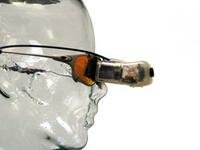August 07, 2004
Many Places, One Mind
![image634323x[1].jpg](/archives/image634323x[1].jpg)
Anesthesiologists at Vanderbilt University Medical Center are doing something that many people in important jobs are likely to start doing over the next three years, just as mechanics in auto shops are - using mediated reality. Vanderbilt's Anesthesiologists are using head mounted displays to be in many places at once, by use of cameras. Future security guards will likely follow suit, wearing HMDs that allow them to see many places and pull up individual cameras to view away from their control room.
'You may actually be monitoring anywhere from 4-to-15 patients at one time,' says Dr. Michael Higgins. 'In any one of those situations something can happen to a patient.'" [far far future]
[Link via near near future]
June 23, 2004
ACLU Bust Card for Photographers
 Reader Len Norton wrote in with a great tip in response to the uncamera'd post describing a pdf/palmbook similar to the ACLU's Bust Card but released by Attorney Bert P. Krages. The free document is a quick and well written guide for photographers who want to know where and when they legally can snap their photos.
Reader Len Norton wrote in with a great tip in response to the uncamera'd post describing a pdf/palmbook similar to the ACLU's Bust Card but released by Attorney Bert P. Krages. The free document is a quick and well written guide for photographers who want to know where and when they legally can snap their photos.
From the front page of their distribution site:
"The right to take photographs is now under assault more than ever. People are being stopped, harassed, and even intimidated into handing over their personal property simply because they were taking photographs of subjects that made other people uncomfortable. Recent examples include photographing industrial plants, bridges, and vessels at sea. For the most part, attempts to restrict photography are based on misguided fears about the supposed dangers that unrestricted photography presents to society.
Ironically, unrestricted photography by private citizens has played an integral role in protecting the freedom, security, and well being of all Americans. Photography in the United States has contributed to improvements in civil rights, curbed abusive child labor practices, and provided information important to investigating crimes. These images have not always been pretty and often have offended the sensibilities of governmental and commercial interests who had vested interests in a status quo that was adverse to the majority in our country."
From "The Photographer's Right":
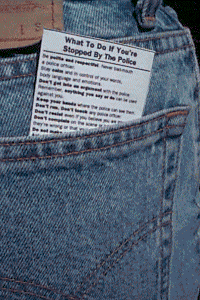 "Who Is Likely to Violate Your Rights
"Who Is Likely to Violate Your Rights
Most confrontations are started by security guards and employees of organizations who fear photography. The most common reason given is security but often such persons have no articulated reason. Security is rarely a legitimate reason for restricting photography. Taking a photograph is not a terrorist act nor can a business legitimately assert that taking a photograph of a subject in public view infringes on its trade secrets. On occasion, law enforcement officers may object to photography but most understand that people have the right to take photographs and do not interfere with photographers. They do have the right to keep you away from areas where you may impede their activities or endanger safety. However, they do not have the legal right to prohibit you from taking photographs from other locations."
...
"Despite misconceptions to the contrary,
the following subjects can almost always be photographed lawfully
from public places:"
- Accident and fire scenes
- Children
- Celebrities
- Bridges and other infrastructure
- Residential and commercial buildings
- Industrial facilities and public utilities
- Transportation facilities (e.g., airports)
- Superfund sites
- Criminal activities
- Law enforcement officers
Other sections include: "They Have Limited Rights to Bother", Question, or Detain You", "They Have No Right to Confiscate Your Film", "Your Legal Remedies If Harassed", and "How to Handle Confrontations". All of which is on one small reference page that you can fold up and put in your wallet.
Makes me want to print up a bunch for my photography and photojournalist friends.
JWZ and the livejournal crowd have this to say on the subject.
Update: "the whole photographic freedom debate just annoys me...it seems so clear to me :-)" [Rich_Gibson]
[Link thanks Len!]
June 21, 2004
Uncamera'd in a Transparent Society?

The issue of people being uncamera'd is soon to be pretty big. Sprint thinks people want cameraless Trio 600s phones. Corporate America is worried, I can understand why; It sucks to be on the other end.
Dan Gillmore writes:
"I suppose it's always better to sell what the customer wants. But I have bad news for Sprint's worried customers: This won't help much, because the pace of technology means cameras will soon disappear from view, embedded in clothing and eyeglasses, not just phones.
Sprint's move highlights one more set of issues we have to confront in a world of digital information. Whether we're talking about photos or videos or documents or just about anything else that can be converted into zeroes and ones, we're entering a changed world."
[Link via boingboing]
Speaking of transperency in our society...
Who's got the power? Enron's got the Power. (5.1 MP3 Link)
[via dav via boing boing]
June 19, 2004
70 Megapixel 360deg Cam
 At first I thought this was a typo but considering the price, it's just a top-notch camera. The Livecam is supposed to be a 70 megapixel camera that does seamless 360 degree images ala QuicktimeVR. Interestingly, the camera can zoom up to 20x, which makes me wonder if they're hoping casinos might purchase these. With and embedded webserver that is completely open-source it sounds like a dream. Selling for CHF 9,600 (about 7,716 USD).
At first I thought this was a typo but considering the price, it's just a top-notch camera. The Livecam is supposed to be a 70 megapixel camera that does seamless 360 degree images ala QuicktimeVR. Interestingly, the camera can zoom up to 20x, which makes me wonder if they're hoping casinos might purchase these. With and embedded webserver that is completely open-source it sounds like a dream. Selling for CHF 9,600 (about 7,716 USD).
This would make a great webcam.
June 17, 2004
HOWTO: GeoImages
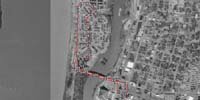 I'm currently working on a hack for an upcomming book called "Mapping Hacks" for O'Reilly Books, so this hack from Digital Photography Hacks really caught my attention. David suggests using TopoVision to create the images, but my friend Schuyler has a perl hack which links albums to GPS tracklogs as well if you're not a Windows user. In addition, Anselm and I (Tom Longson), are working on a way to streamline this process by autolinking photos to tracklogs with just a web browser. If you're interested in getting started, this article is sure to help.
I'm currently working on a hack for an upcomming book called "Mapping Hacks" for O'Reilly Books, so this hack from Digital Photography Hacks really caught my attention. David suggests using TopoVision to create the images, but my friend Schuyler has a perl hack which links albums to GPS tracklogs as well if you're not a Windows user. In addition, Anselm and I (Tom Longson), are working on a way to streamline this process by autolinking photos to tracklogs with just a web browser. If you're interested in getting started, this article is sure to help.
June 15, 2004
POV Cams for Alzheimer Patients
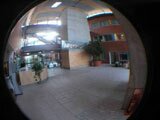 While I wasn't impressed when I first heard about Microsoft working with wearable cameras, this latest announcement actually sounds rather heart-warming. Microsoft's Cambridge lab is working with Addenbrookes Hospital to help treat Patients with Alzheimer's disease or head injury. These patients already keep written diaries to help them through their life, but many, especially children, dislike writing all the time. Patients then can look through their visual diaries to help augment their memory and improve their quality of life. The camera uses light sensors and IR sensors to detect changes in light and to help detect when the person is talking to someone else, or playing with an animal.
While I wasn't impressed when I first heard about Microsoft working with wearable cameras, this latest announcement actually sounds rather heart-warming. Microsoft's Cambridge lab is working with Addenbrookes Hospital to help treat Patients with Alzheimer's disease or head injury. These patients already keep written diaries to help them through their life, but many, especially children, dislike writing all the time. Patients then can look through their visual diaries to help augment their memory and improve their quality of life. The camera uses light sensors and IR sensors to detect changes in light and to help detect when the person is talking to someone else, or playing with an animal.
Even though this is very nice to hear, I don't want Microsoft to be the company making my wearable computers.
June 12, 2004
DejaView Finds Manufacturer
 DejaView finally, after being at the consumer electronics show, being hyped on TechTV and Regis & Kelly, has found just under a year later, a manufacturing partner.
DejaView finally, after being at the consumer electronics show, being hyped on TechTV and Regis & Kelly, has found just under a year later, a manufacturing partner.
Nothing really new to say here, except if you want to get in on the pre-orders, you can get in que for just under $400. They haven't changed the design of their 30 second buffer instant replay point of view camcorder. If something just happened that you want to download later, you press a button, leaving a 30 second movie on it's memory card.
Not terrible considering JonesCam is selling a similar camera without a recorder for $275. I didn't find the press video of Regis Philman wearing the DejaView that interesting, but it did make Regis look a bit silly. I really hope that they replace their camera with something a little more sleek.
Related:
DejaView Announces Gargoyle Toys
June 21, 2003
DejaView Details October 26, 2003
New POV Cam (about the JonesCam not DejaView) November 26, 2003
Updated on June 12th with related links and improved text for clarity.
June 08, 2004
HitchCam - Cameras for Cars
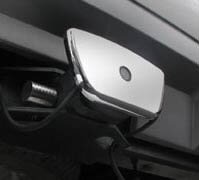 I saw an SUV the other day with a bumper sticker that said "HitchCam". Curious, I checked out his hitch, which had a nice metal finish with a black dot in the middle. Impressed to see such a sleek job, I waved from my cameraless car, and when I got home I found the website.
I saw an SUV the other day with a bumper sticker that said "HitchCam". Curious, I checked out his hitch, which had a nice metal finish with a black dot in the middle. Impressed to see such a sleek job, I waved from my cameraless car, and when I got home I found the website.
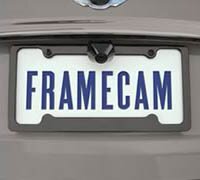 HitchCam describes itself as "Forward Thinking for Reverse Driving", which they do a pretty good job at. All their products are "Vehicle Rear Vision Systems", and they do it in several different places. The first, which I saw on the road was their HitchCam, but they also sell a wide angle "FrameCam", an "H-Cam" aimed at the GM Hummer H2, and the UniCam, a wide angle camera that's designed to be mounted in the car's body somewhere.
HitchCam describes itself as "Forward Thinking for Reverse Driving", which they do a pretty good job at. All their products are "Vehicle Rear Vision Systems", and they do it in several different places. The first, which I saw on the road was their HitchCam, but they also sell a wide angle "FrameCam", an "H-Cam" aimed at the GM Hummer H2, and the UniCam, a wide angle camera that's designed to be mounted in the car's body somewhere.
If your interested in this kind of thing, you may want to check out a display called VISOR (warning -annoying flash), which is designed to go in the place of your vanity mirror. Never considered putting a display there.
[Link]
June 05, 2004
Philips KEY019 Digital Camera
 Philips has introduced a new digital camera that is being released this week, and makes me drool. Like their earlier model (Philips Camera Key Ring 007), this camera is small. Unlike their earlier model, this one boasts a kopin 0.16 color LCD display (found in some wearable computer HMDs- not to scale in picture). In addition, they boast a 128 meg flash drive, built-in MPEG-4 camcorder (up to twenty-five minutes), 2 megapixel camera, and an MP3 player, and it recharges and transfers files over USB. Understandably, this is a bit more expensive at $222 as far as I can tell, but it still seems like a great buy.
Philips has introduced a new digital camera that is being released this week, and makes me drool. Like their earlier model (Philips Camera Key Ring 007), this camera is small. Unlike their earlier model, this one boasts a kopin 0.16 color LCD display (found in some wearable computer HMDs- not to scale in picture). In addition, they boast a 128 meg flash drive, built-in MPEG-4 camcorder (up to twenty-five minutes), 2 megapixel camera, and an MP3 player, and it recharges and transfers files over USB. Understandably, this is a bit more expensive at $222 as far as I can tell, but it still seems like a great buy.
Sweet. Keep it up Philips.
June 04, 2004
Low Light Photography
One of the major problems in wearable computers and digital cameras is getting the best results in nighttime or low light situations. Thankfully, DigitalPhotographyBlog has assembled a list of tips and tip sites on this subject.
May 28, 2004
Killer Spotlight for Infrared
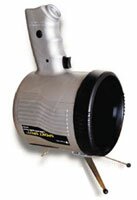 If you have an infrared camera, especially those mediated reality POV goggles we previously wrote about, this handheld spotlight is a must have. Perfect for hunters, assassins, and snoops, the $150, the 1-million candlepower is a bargain. I also can see the military using something very similar in conjunction with their night vision goggles, if they don't already.
If you have an infrared camera, especially those mediated reality POV goggles we previously wrote about, this handheld spotlight is a must have. Perfect for hunters, assassins, and snoops, the $150, the 1-million candlepower is a bargain. I also can see the military using something very similar in conjunction with their night vision goggles, if they don't already.
If I can get an infrared camera this summer, I may well buy one of these for the wifi technomad geekery at burning man.
[Link via gizmodo]
Gizmodo also recommends How Night Vision Works, which I really enjoyed.
May 26, 2004
Ricoh GPS Camera
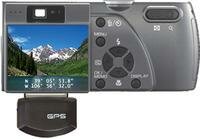 While I had heard about these quite a long time ago, I actually see the Ricoh being sold for $950 by a gps enthusiast site, GeoSpatial Experts. Unfortunately, enthusiast or not, the only thing they seem to be experts at is marketing. I do not recommend buying their software (don't buy the camera bundle, it's $200 more expensive). That being said, the Ricoh looks like a really good solution for taking geo-referenced images if you're in the market for a new camera.
While I had heard about these quite a long time ago, I actually see the Ricoh being sold for $950 by a gps enthusiast site, GeoSpatial Experts. Unfortunately, enthusiast or not, the only thing they seem to be experts at is marketing. I do not recommend buying their software (don't buy the camera bundle, it's $200 more expensive). That being said, the Ricoh looks like a really good solution for taking geo-referenced images if you're in the market for a new camera.
Hopefully other big players will follow this trend- it's not going away.
May 16, 2004
Eye sensing POV camera
 Nice hack at creating a POV camera that detects eye contact. I had an idea for this a long time ago, but designed to see if people were checking out my butt. I would like to see this hack be improved though, as it reminds me of Steve Mann's wearable computers from the 1980s.
Nice hack at creating a POV camera that detects eye contact. I had an idea for this a long time ago, but designed to see if people were checking out my butt. I would like to see this hack be improved though, as it reminds me of Steve Mann's wearable computers from the 1980s.
Update (May 18th):
From alterslash:
Second version in development - by tilrman (Score: 5, Funny)
Researchers found that the eyeBlog was only 28% effective when used by female wearers, but couldn’t reproduce the effect in the lab. After some field trials, however, they discovered and corrected the problem. The new eyeBlog-II for women is 96% accurate and will be completed sometime next month. Rather than attaching the sensors to eyeglasses, the eyeBlog-II will be embedded into a bra.
Re:Second version in development - by fraccy (Score: 5, Funny)
hehehe… funny as that is, I think you’re onto a winner. People want to know when they’re being watched by someone /not/ in their field of view. Imagine the marketing potential of a device attached to the buttocks, alerting female wearers of an er.. admiring onlooker. This would probably result in some kind of armageddon (and a lot of slapped faces), along with the subsequent development of ButtBlog jamming devices…
November 26, 2003
New POV Cam
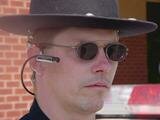 While looking for miniature cameras that would work well for my glasses, I ran across the Jonescam Lipstick POV Cam, which is pretty nice. No word on pricing yet, I'll update this entry when I find out. In the meantime, enjoy this menacing image of this police officer. It seems like the DejaView cam, this is marketed towards the anti-terrorism personal and big brother lovers, also known as Law Enforcement SWAT, Public Safety, [and] Homeland Security. Hopefully it will at least make it cheaper for us individuals.
While looking for miniature cameras that would work well for my glasses, I ran across the Jonescam Lipstick POV Cam, which is pretty nice. No word on pricing yet, I'll update this entry when I find out. In the meantime, enjoy this menacing image of this police officer. It seems like the DejaView cam, this is marketed towards the anti-terrorism personal and big brother lovers, also known as Law Enforcement SWAT, Public Safety, [and] Homeland Security. Hopefully it will at least make it cheaper for us individuals.
Update (Nov 29th, 1:52PM): The price for these units are $1,900USD. They are available for purchase, unlike the DejaView. I have spoken at length with the JonesCam people, and will be publishing another article regarding these unique cameras.
November 15, 2003
IR Augmented Vision POV Cam
 Here's a new POV cam called the X-Reflect Goggles, which is aimed at the voyeur market. This is obviously an area where people are more likely to shell out $2,400USD to capture data. I get the feeling that like the toy market, the sex industry may provide a strong source of gargoyle hardware, at a much more competitive price.
Here's a new POV cam called the X-Reflect Goggles, which is aimed at the voyeur market. This is obviously an area where people are more likely to shell out $2,400USD to capture data. I get the feeling that like the toy market, the sex industry may provide a strong source of gargoyle hardware, at a much more competitive price.
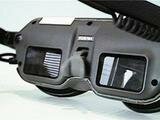 This POV cam is aimed at '[seeing] through some type of clothing material (mostly swimwear and many types of synthetic materials)', but it would also make a great augmented vision camera for low light conditions where you'd like to provide a spotlight for your POV cam without using natural light. All you would have to do is attach some IR emitters from the sides of these things, and attach the video cables to your computer.
This POV cam is aimed at '[seeing] through some type of clothing material (mostly swimwear and many types of synthetic materials)', but it would also make a great augmented vision camera for low light conditions where you'd like to provide a spotlight for your POV cam without using natural light. All you would have to do is attach some IR emitters from the sides of these things, and attach the video cables to your computer.
It boasts 470 Lines of resolution, built in IR chips and IR pass filters. color output, adjustable exposure, auto IRIS, auto white balance, light weight, and a year warranty. Here are some non-worksafe examples of what kind of output you'd get in the daylight. Honestly, TekGear should pick these up and market them to the wearable market. After all, if you're staring at women in swimsuits wearing this thing, they probably know what you're up to.
Thanks to FleshBot's 'Spy Glasses' and Gizmodo's (yes we love them) 'For all the voyeurs in the house: get x-ray vision'.
November 10, 2003
Prototype HMD/POV cam from Motorola and Frog Design
 In Time's new article, Coolest Inventions for 2003, they profile a device from Motorola and Frog Design which part of their Offspring Wearable prototypes. It's odd that Time would list a device that isn't really available, but it is quite cool. It houses a digital pinhole camera above the right lens, a miniature display on the inside of the left lens, and an ear piece that pops out the side. They intend to market this as a cell phone accessory available for the public in 2006.
In Time's new article, Coolest Inventions for 2003, they profile a device from Motorola and Frog Design which part of their Offspring Wearable prototypes. It's odd that Time would list a device that isn't really available, but it is quite cool. It houses a digital pinhole camera above the right lens, a miniature display on the inside of the left lens, and an ear piece that pops out the side. They intend to market this as a cell phone accessory available for the public in 2006.
I for one applaud a major hardware manufacturer such as Motorola to produce a Head Mounted Display with a Point Of View Camera included. The design looks pretty nice too, but I hope they anticipate their male market as well as their female consumers.
Three years seems like a long time to wait to buy this gadget, but since it's a Motorola product, HMDs and POV cams are going to be commonplace when it is available to the public.
In addition, if you're interested in exoskeletons, check Time's bit in this article about Keijiro Yamamoto's Power Suit, which uses air power to augment your strength. Costs 15-20k, so only sutiable for rich gargoyles.
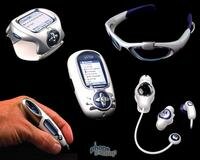 Update (Nov 10th, 4:53PM):
Update (Nov 10th, 4:53PM):
This turns out to be the same prototype that was popularized a while ago with a variety of other wearable toys, all of which utilize bluetooth to communicate. I also really like the wearable camera they are producing, although it's not nearly as sweet as the POV cam in the shades.
From PhoneScoop:
Goggles: Integrated into the frame of exciting,
stylish sports eyewear, this device incorporates a
heads-up display, digital camera, ear bud and
microphone. Due to the power requirements, there is a
tethered cord that runs out the back to an external
power supply. You can view 800 X 600 displays while
simultaneously staying in touch with the world around
you.
November 06, 2003
Wearable Toys for X-Mas
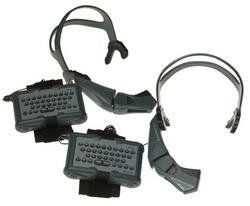 I saw an ad for this on Cartoon Network, and completely missed the name, but was recently able to figure it out by browsing the ToysRUs website.
I saw an ad for this on Cartoon Network, and completely missed the name, but was recently able to figure it out by browsing the ToysRUs website.
This is much like a walkie-talkie, except that it uses a mini keyboard and head mounted display to display the message, which can be up to 23 characters. They claim a range of 200 feet, which would work okay for paintball, or other sneaky activities. I'm guessing these would be pretty easy to hack, although you might just want to mount a short LCD on the inside of some glasses.
In any case, it's a neat toy, one that I would have enjoyed as a child. I loved pretending I was some spy trying to avoid detection around the house.
 In addition, this company is producing a funny looking POV camera that uses traditional film, and apparently needs to be taken apart in order to remove a 'strange circle thing centered on the middle of the photo with the words "Spy Cam" (kind of like a gun sight.)'. I think if they tried to do this again with a cheap digital cam, it could actually be decent. Again, for reasonable use, you could probably just stick a wireless mini cam in a pair of sunglasses, and get a much better effect.
In addition, this company is producing a funny looking POV camera that uses traditional film, and apparently needs to be taken apart in order to remove a 'strange circle thing centered on the middle of the photo with the words "Spy Cam" (kind of like a gun sight.)'. I think if they tried to do this again with a cheap digital cam, it could actually be decent. Again, for reasonable use, you could probably just stick a wireless mini cam in a pair of sunglasses, and get a much better effect.
All in all, I was surprised by these products, but only likely to get the first toy because it only costs about $35 for two. Should be fun stuff to mutilate for next year's Burning Man.
October 26, 2003
DejaView Details
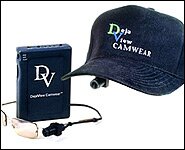 Found an article about the DejaView written by ABCNews, which has some interesting tidbits about the Point of View Camera company, DejaView. DejaView has launched their website, and talked a bit about their product, but have yet to sell it to the public.
Found an article about the DejaView written by ABCNews, which has some interesting tidbits about the Point of View Camera company, DejaView. DejaView has launched their website, and talked a bit about their product, but have yet to sell it to the public.
They don't intend for their camera to be covert. This is probably a PR move to rebuke critics of new camera technology, but abc revealed unintentionally that they don't aim at empowering individuals as much as empowering law enforcement, as evident in the following paragraph:
'Bajarin, meanwhile, sees a better market among special "vertical" segments — such as the law enforcement community.'
The article also says that DejaView has attained '...$500,000 in private funding to develop prototypes of the cameras. But, it's also in the process of raising the estimated $5 million needed to ramp up production and hopefully begin distribution to mass market retail chains before the end of the year.'
Not surprising. I'm wondering how long it will take for them to get anything out on the market though. Maybe Sony or Phillips will beat them to it.
The ABC article is available here, but don't bother reading it unless you're looking for information about why a Point of View camera is a good or bad idea for society. Good or bad, this technology is about to hit big time.
October 25, 2003
Wearable Cameras
 Well it looks like the industry is starting to explore the idea of wearable cameras. Two cameras are actually out on the market, the Minox (german company, pictured at left), and the Philips Wearable Digital Camera (pictured on right). Both are USB cameras, but the Minox seems to be a much higher quality cam.
Well it looks like the industry is starting to explore the idea of wearable cameras. Two cameras are actually out on the market, the Minox (german company, pictured at left), and the Philips Wearable Digital Camera (pictured on right). Both are USB cameras, but the Minox seems to be a much higher quality cam.  On the other hand, the Phillips cam is definitely a good buy for approximately $100USD, which is much less pricey than the Minox which is € 229 (approximately $250USD).
On the other hand, the Phillips cam is definitely a good buy for approximately $100USD, which is much less pricey than the Minox which is € 229 (approximately $250USD).
I haven't seen photos of either of these cameras being worn, but they do seem like they're getting closer to things like the DejaView Point of View camera which we previously reported on. My hope is that more wearable cameras will enter the market, paving the way for the mass market POV cams for that TekGear would sell, like their recent camera/HMD concept prototype (pictured below).
September 19, 2003
HP's POV Cam Prototype
 The BBC has written an article on HP's newly developed prototype Point Of View camera, which uses a pair of glasses as the camera's mount/casing. While the BBC's article has some 'futureshock' fodder, there are also some interesting quotes regarding image post-processing. The article also says that they're using metadata to hold orientation data.
The BBC has written an article on HP's newly developed prototype Point Of View camera, which uses a pair of glasses as the camera's mount/casing. While the BBC's article has some 'futureshock' fodder, there are also some interesting quotes regarding image post-processing. The article also says that they're using metadata to hold orientation data.
This extra data keeps track of how and where a picture was taken and can spot if a subject was walking or turning.
The system also inspects images to see if people are smiling or looking directly at the camera lens.
Worst line from the article:
"HP need to look at the implications on privacy and stuff like that before they flood the market with these."
Dear mister "technology analyst" Bill Thompson: go read up on "Sousveillance" and look up at all the corporate security cameras around before you start attacking HP for building a camera that individuals can protect themselves with.
June 30, 2003
GPS Tagged CamPhones
 Written by dav, someone I know through infoanarchy.org. I found the article on the web through muxway:
Written by dav, someone I know through infoanarchy.org. I found the article on the web through muxway:
"Mie's cellphone can tag each photo she takes with the latitude/longitude coordinates. Last night she tried sending a geotagged jpeg for the first time, so this morning I started researching how to get the coordinates out of the jpeg. It turns out that the data is stored in EXIF headers.
...
Finally, I found a java library/util called metadata-extractor which seems to parse every bit of data it can from the jpeg, including all of the GPS data!
Now I was in business. I hacked in a call to the java util in blogpost.pl and also some code which causes each geo-coded image to be hot linked to a japanese version of mapquest called mapfan. A better system would take a look at the coordinates and link to whatever map system was appropriate (mapquest or tiger for US and European locations) but for right now the only person using geo-tagged jpegs with my blogpost.pl (that I know of) is Mie, and her phone only works in Japan." -Exerpt from AkuAku SF
June 21, 2003
DejaView Announces Gargoyle Toys
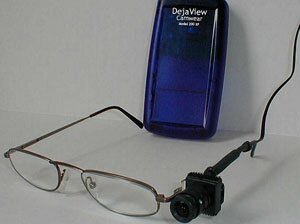 DejaView has released a wearable computer with one purpose, to capture video. The camera itself starts at $80, but to get the full working model one needs to get their CamWear 100, which costs
DejaView has released a wearable computer with one purpose, to capture video. The camera itself starts at $80, but to get the full working model one needs to get their CamWear 100, which costs $300 $400 and can record 250 thirty second video clips. The DejaView wearable passively records, and when you request a clip, it's of the previous thirty seconds, not the thirty seconds after you hit the button. Their more expensive model, the CamWear 200XP costs $500 and can record four hours of video.
Update (June 12th, 2004):
They just announced that they've found someone to produce their product, sans expensive model.
"Deja View was demonstrating their interesting wearable camcorder. It contains their patent-pending technology that has created a camera/microphone unit less than an inch long and smaller than a nickel. It’s designed to be worn on your eyeglasses or hat. It’s attached by a wire to a PDA-sized remote unit that clips to a belt or waistband." - Exerpt from MSNBC.
May 07, 2003
Fictional Wearables
nym's earlier entry on StartleCams reminded me of something. A fair number of scientific advances were prophesied in science fiction (I keep on forgetting to read Thomas Disch' The DREAMS OUR STUFF IS MADE OF), and Warren Ellis' Transmetropolitan mentioned something similar back in the 90s.Spider Jerusalem,
 the series' grumpy antihero journalist, wears camera-shades that happen to capture evidence of an embarrassing drunken night due to anti-assault defenses. There aren't many devices out there that provide this kind of functionality, but recording is becomming a much more commonplace activity. In the 90s there was a kidnapping/murder where the victim had a casette recorder on her, and without the murderer's knowledge, captured her pleading for life. The police found the tape later, and used it in court. This was turned into a Law & Order episode. More cases of crime documentation from victims with webcams, cellphones or wearables are coming.
the series' grumpy antihero journalist, wears camera-shades that happen to capture evidence of an embarrassing drunken night due to anti-assault defenses. There aren't many devices out there that provide this kind of functionality, but recording is becomming a much more commonplace activity. In the 90s there was a kidnapping/murder where the victim had a casette recorder on her, and without the murderer's knowledge, captured her pleading for life. The police found the tape later, and used it in court. This was turned into a Law & Order episode. More cases of crime documentation from victims with webcams, cellphones or wearables are coming. On a cheerier tone, Transmet has SPKF feedsite (think 30th Cent. website) listeners that provide audio/video to their audience via attractive electronic and harness combos. Again, something that could be done today. A lot of sci fi (and its hipper, somewhat brain-damaged cousin cyberpunk) skips right over wearables to cybernetic implants, but who wants to go under the knife every time a faster model comes out?
On a cheerier tone, Transmet has SPKF feedsite (think 30th Cent. website) listeners that provide audio/video to their audience via attractive electronic and harness combos. Again, something that could be done today. A lot of sci fi (and its hipper, somewhat brain-damaged cousin cyberpunk) skips right over wearables to cybernetic implants, but who wants to go under the knife every time a faster model comes out?
May 04, 2003
WarSpying
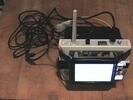 From Steve Barr: "From Slashdot, how to tune into X10 camera broadcasts while walking around" (for ~ 220USD) I had never considered trying to pick up *other* people's cameras, but I suppose it does have a voyeuristic appeal. Since these cameras are only 80 dollars and dropping, I'd bet this device would be good for removing the pesky things from unwanted areas. Personally, I'm going to stay away from wireless cameras without crypto altogether.
From Steve Barr: "From Slashdot, how to tune into X10 camera broadcasts while walking around" (for ~ 220USD) I had never considered trying to pick up *other* people's cameras, but I suppose it does have a voyeuristic appeal. Since these cameras are only 80 dollars and dropping, I'd bet this device would be good for removing the pesky things from unwanted areas. Personally, I'm going to stay away from wireless cameras without crypto altogether.
May 03, 2003
POV and Button Cameras
 Part of being a gargoyle seems to be recording video and audio. While computer software innovation is important, having cameras that are easy to wear and use on a day to day basis is very important too. Most notably, I've found a camera called the BonoCam, which is a Point Of View (POV) camera that rides on the side of a pair of stylish shades (pictured on right). This camera is only rentable, but one can buy a similar camera without the glasses, at a very reasonable price. another company that sells cameras designed for adventure sports makes a larger camera that can be attached to virutally any helmet or baseball hat. They also sell a remote that makes it easy to record with a LANC device.
Part of being a gargoyle seems to be recording video and audio. While computer software innovation is important, having cameras that are easy to wear and use on a day to day basis is very important too. Most notably, I've found a camera called the BonoCam, which is a Point Of View (POV) camera that rides on the side of a pair of stylish shades (pictured on right). This camera is only rentable, but one can buy a similar camera without the glasses, at a very reasonable price. another company that sells cameras designed for adventure sports makes a larger camera that can be attached to virutally any helmet or baseball hat. They also sell a remote that makes it easy to record with a LANC device.
 I've found more concealed items such as the Button Cam (pictured on the left), which comes with ten matching buttons. For all the people who think they can find any hidden camera in a room, I've also seen this camera that looks identical to a generic screw. If you're going for a camera that costs less than a cheap laptop, go for a pager camera or a miniuture camera.
I've found more concealed items such as the Button Cam (pictured on the left), which comes with ten matching buttons. For all the people who think they can find any hidden camera in a room, I've also seen this camera that looks identical to a generic screw. If you're going for a camera that costs less than a cheap laptop, go for a pager camera or a miniuture camera.
April 22, 2003
Wearable Cameras
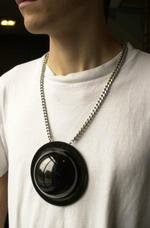 A good article by Jennifer Healey and Rosalind Picard is avaliable online, titled "StartleCam: A Cybernetic Wearable Camera". StartleCam is an idea to employ body sensors to activate a camera on the person. Having recently been in a stituation where I witnessed a mother kick her daughter in a supermarket parking lot, I can appreciate the desire to trigger recording by dramatic changes in one's personal body. Perferably I'd like a device that records all the time, and would red flag pertinant data for later review, but I can undstand data storage limitations. I have wanted a wearable camera for a long time. If you're interesting in building a wearable camera, I recommend you check out Steve Mann's DomeWear which with a few other products, could produce a very effective startlecam.
A good article by Jennifer Healey and Rosalind Picard is avaliable online, titled "StartleCam: A Cybernetic Wearable Camera". StartleCam is an idea to employ body sensors to activate a camera on the person. Having recently been in a stituation where I witnessed a mother kick her daughter in a supermarket parking lot, I can appreciate the desire to trigger recording by dramatic changes in one's personal body. Perferably I'd like a device that records all the time, and would red flag pertinant data for later review, but I can undstand data storage limitations. I have wanted a wearable camera for a long time. If you're interesting in building a wearable camera, I recommend you check out Steve Mann's DomeWear which with a few other products, could produce a very effective startlecam.

